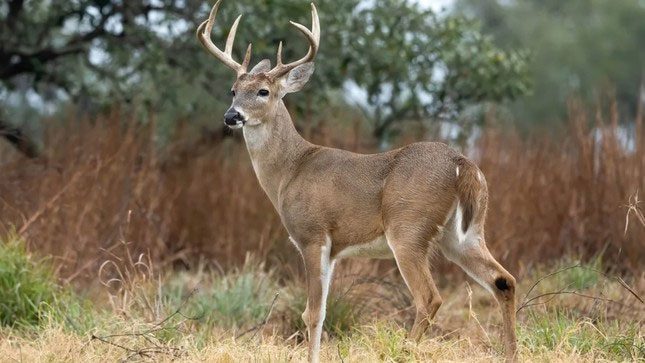According to a study by the Animal and Plant Health Inspection Service of the U.S. Department of Agriculture, a person infected with the virus that causes Covid-19 transmitted it to wild white-tailed deer over 100 times at the end of 2021 and the beginning of 2022. This rampant infection has spread among this deer species, and there have been at least three suspected cases of humans contracting the virus back from deer.
The study also revealed that several coronavirus strains such as Alpha, Delta, and Omicron continue to circulate among deer populations from humans.
Researchers indicate that these animals could become a long-term reservoir for the virus if it continues to spread within the deer population as it does among humans, allowing the virus to evade detection and develop new, potentially more dangerous variants.
Scientists are concerned that these viruses could spread back to humans, leading to another severe outbreak, similar to the unexpected emergence of Omicron. Although this scenario is worrisome, researchers currently believe it remains theoretical.

A male white-tailed deer near Goose Island State Park in Texas, USA. (Photo: Getty Images/CNN).
Research on Animal Virus Reservoirs
Experts state that having a reservoir in wildlife would be a larger issue if we had truly controlled the virus in humans.
“The more transmission occurs across species and the more infections happen, the greater the risk of new variants emerging. However, it is difficult to determine whether deer play a significant role in the overall importance.” – Scott Weese, a veterinarian studying infectious diseases between animals and humans at the University of Guelph in Canada, stated.
The U.S. government intends to continue and expand animal surveys to monitor how the virus spreads through animal populations, according to a press release from the U.S. Department of Agriculture (USDA). This study was recently published in the journal Nature Communications.
“We want the virus to persist within the deer population to avoid another potential mechanism for variants to emerge and to minimize contact with more wildlife species,” Weese noted.
However, he mentioned that currently, there is little we can do to prevent the spread. Occasionally, some scientists propose vaccinating certain wildlife species to prevent disease spread, but this suggestion is costly.
Just as there is no vaccine that completely prevents Covid-19 transmission among humans, there is no vaccine that stops transmission in animals.
Why Deer?
Deer and humans have very similar ACE2 receptors, which are the entry points that the virus uses to invade cells.
For this research, scientists spent months collecting nearly 9,000 respiratory swab samples from wild deer across 26 states and the District of Columbia. These samples yielded nearly 400 viral gene sequences from 34 strains of the virus that causes Covid-19. They were able to closely compare these gene sequences to identify viruses in humans that closely resembled those found in deer.
According to the studies, in 109 cases, researchers stated they could demonstrate that deer were infected by the virus from humans.
Contact Between Deer and Humans
At least in three recorded human infection cases, the genetic sequences matched precisely with those of the virus previously carried by deer, leading researchers to suspect that these individuals may have been infected from animals.
Deer are common animals in the United States, even in urban environments. Population surveys estimate the deer population in the U.S. at 30 million, and they can become infected by consuming food from human waste or drinking contaminated water. Humans may come into direct contact with deer while feeding or hunting them, or through their droppings. Outdoor domestic cats may also act as intermediaries, catching viruses outdoors and bringing them home – Weese explained.
Cats are also susceptible to the virus, like many other species kept in captivity or in zoos.
The Centers for Disease Control and Prevention (CDC) states that the risk of contracting Covid-19 from domestic or wild animals is low. The agency recommends that certain groups, such as hunters, should take special precautions to further reduce their risk.


















































